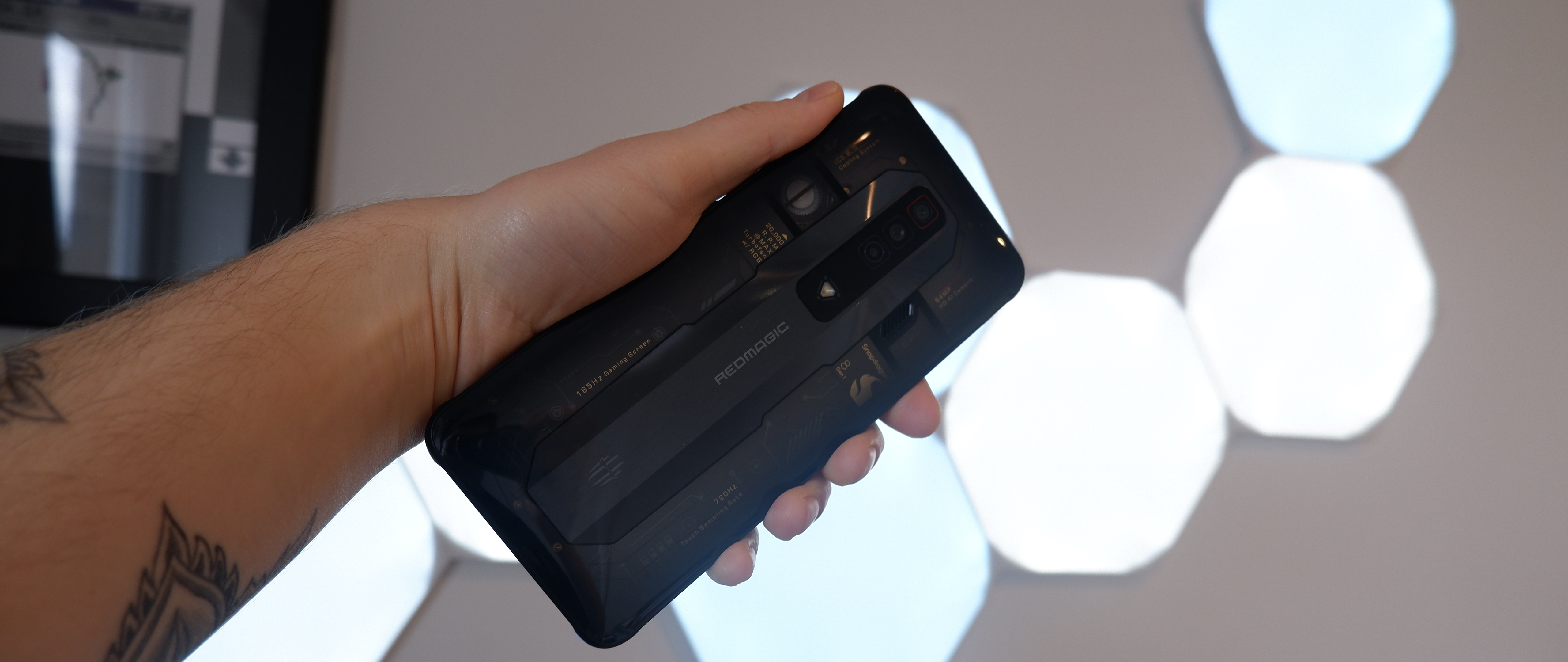Laptop Mag Verdict
The RedMagic 7 is one of the first to jump on the Snapdragon 8 Gen 1 and the result is a blisteringly fast gaming phone. It’s a good spec bump for serious players, mired by the fact that none of the pre-existing problems of the 6S Pro have been addressed or fixed.
Pros
- +
Blisteringly fast performance
- +
Gorgeous, buttery smooth display
- +
Transparent design is still cool...
Cons
- -
...but gamer aesthetic will turn many off
- -
Cameras are dull
- -
No wireless charging support
- -
Lack of IP rating
- -
Gets hot under pressure
Why you can trust Laptop Mag
The RedMagic 7 is another bonkers gaming phone, as the company has strapped a Snapdragon 8 Gen 1 rocket to the internals and sent its performance to the moon.
You may not notice the upgrade at first glance, as RedMagic’s latest Android smartphone shares an identical transparent design to the RedMagic 6S Pro. But there are spec changes all over the place: up to 18GB LPDDR5 RAM, the latest Snapdragon processor and an odd battery downgrade to 4,500mAh rather than the 5,050m the previous model.
Once again, RedMagic’s made a good gaming device, but is it a good phone? Does it improve on the persistent problems that limited the 6S Pro to a niche audience? Let’s find out.
RedMagic 7: Price and configurations
You’ve got a choice of either an Obsidian black model with 12GB RAM and 128GB of storage ($629/£529), another in Pulsar blue with 16GB RAM and 256GB of storage ($729/£619), and this transparent model that we tested with 18GB RAM and 256GB of storage ($799/£679).
That would be aggressive flagship killer pricing for a Snapdragon 8 Gen 1 smartphone when you compare it to the multitude of phones at four figures, and it would significantly undercut its competition in the Asus ROG Phone 5 ($999).
RedMagic 7: Design

The 6S Pro’s design was divisive and RedMagic has changed absolutely nothing about it. It’s still the same beasty, semi-transparent slab with geometric line patterns, space-age industrial stylings and a customizable RGB fan.
It’s not everyone’s cup of tea and chances are if you were to ask someone for their number (in a post-COVID world), they may give you a fake number if you hand them this. But for the players, this will be exactly what you’re looking for.
Sign up to receive The Snapshot, a free special dispatch from Laptop Mag, in your inbox.
Do be careful though, as the vents mean this doesn’t have an IP rating. If that’s an acceptable price to pay for gaming performance, be my guest. But just be careful with getting this phone out in bad weather or taking it down to the beach.

Dimensions also remain identical to the 6S Pro at 6.7 x 3 x 0.37 inches and 7.6 ounces. In comparison, the Asus ROG Phone 5 is taller, thinner and slightly heavier (6.8 x 3.1 x 0.36 inches, 8.4 ounces), and it more broadly matches up to 2022 flagships like the Samsung Galaxy S22 Ultra (6.4 x 3.1 x 0.35 inches, 8 ounces).
The larger size is ideal in landscape gaming mode and keeps any hole-punch camera out the way with bezels, along with the addition of 500Hz shoulder triggers and a sliding trigger surface on the back of the phone to enhance performance.
So, no real changes here. A design that you will love or hate that is built specifically for gaming.

RedMagic 7: Display
The RedMagic 7 packs the same gorgeous 6.8-inch AMOLED display with a 2400 x 1080 pixel resolution, 8-bit color depth and a 165Hz refresh rate that you’ll find in the 6S Pro. This is reflected in the virtually identical lab test results: 698 nits of brightness and a DCI-P3 color gamut of 81.2%, though vivid mode boosts this by 30% above the previous iteration with a gamut of 151.6%.
Comparatively, this is still slightly behind the ROG Phone 5 in terms of brightness (748 nits), but beats out the color gamut (127.6%).
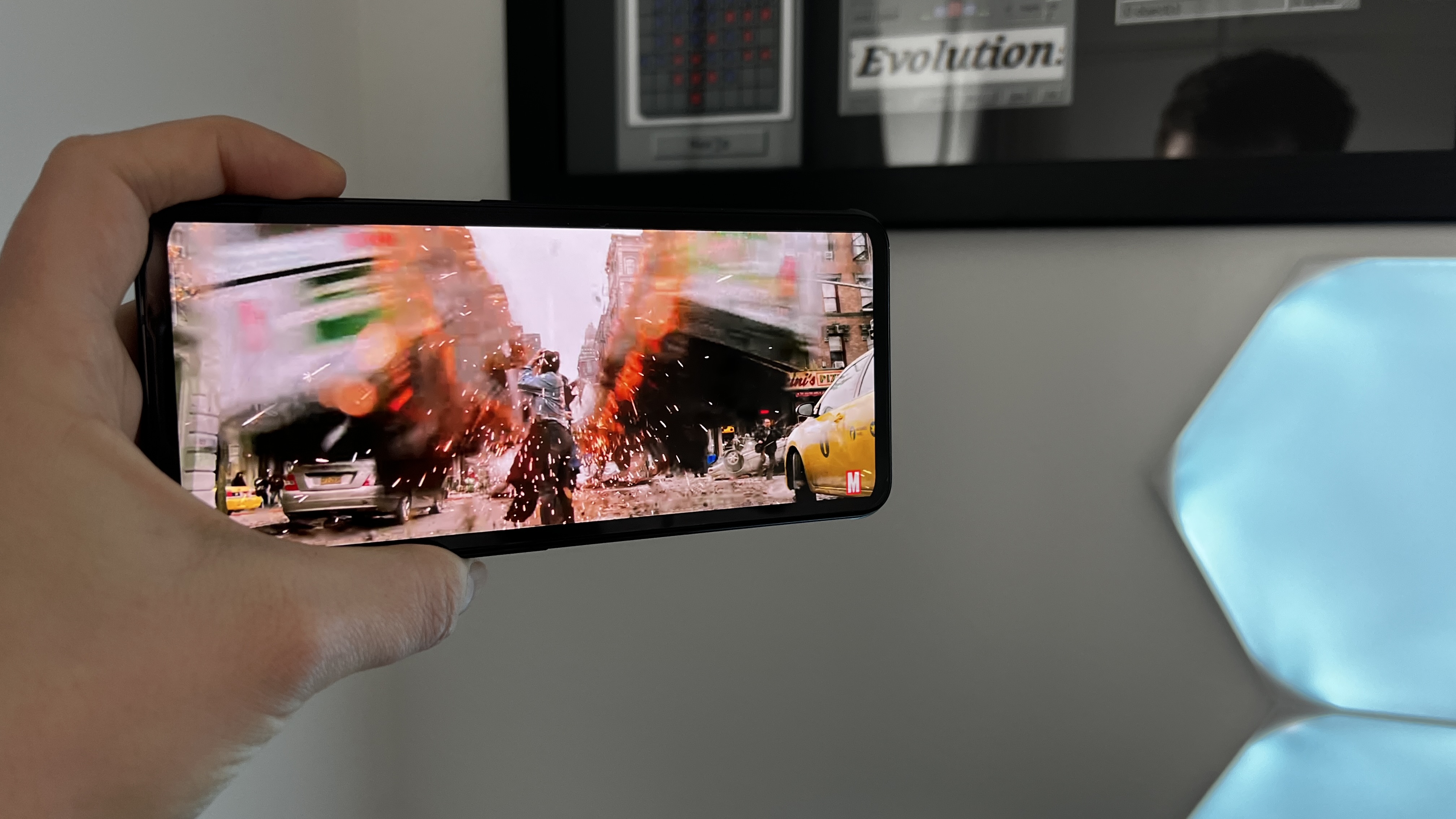
The end result is, once again, a dazzling display with gorgeous color, buttery smooth fluidity and plenty of detail. You can really show this off with the variety of lighting conditions and colors that are in play throughout the Doctor Strange in the Multiverse of Madness trailer, as spells glow off the screen with vivid color.
Security is handled with an under-screen fingerprint reader that is fast and responsive. So responsive even, that it can be used as a heart rate sensor. And gaming control input is lightning fast thanks to the RedMagic 7’s 720Hz touch sampling rate.
RedMagic 7: Audio
A great gaming experience doesn’t just stop at a stunning display. You need good sound for full immersion and the RedMagic 7 delivers handily with the same DTS:X Ultra-certified audio and powerful dual stereo speakers that you find in the 6S Pro.
Even when put under intense pressure with bass heavy, intense metalcore such as Avoid’s EP “The Burner”, there was no distortion at higher volumes. You can be confident that when you use this phone without headphones, you’re getting a good listening experience.
Plus, huge props for RedMagic’s continued commitment to old school headphones by keeping a 3.5mm jack on there.
RedMagic 7: Performance
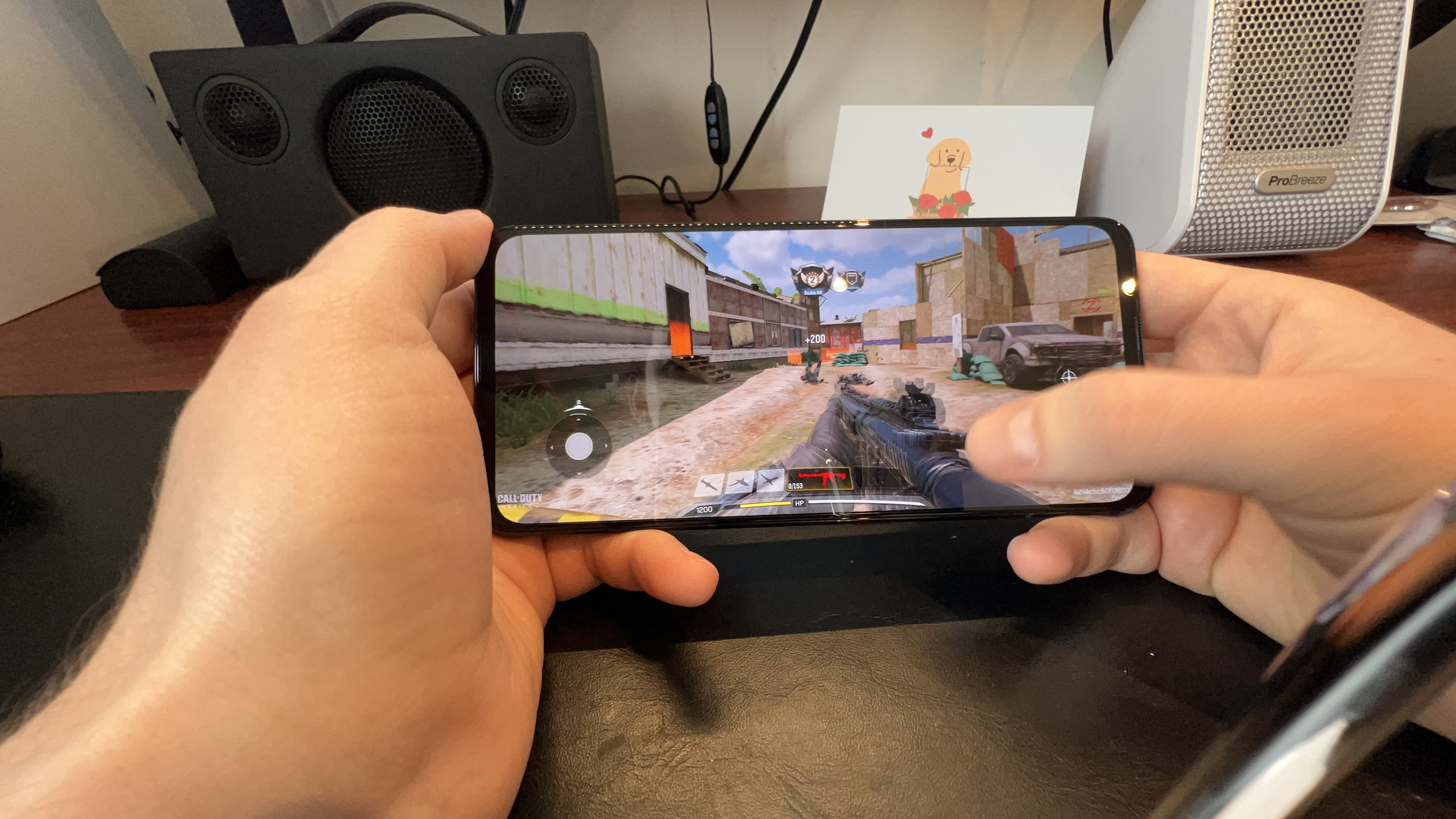
This is where the RedMagic 7 really starts to outshine the 6S Pro — the category that matters most in a gaming phone. Under the hood, you’ll find Qualcomm’s latest Snapdragon 8 Gen 1 chipset clocked at 3GHz, up to 18GB of LPDDR5 RAM and up to 256GB of UFS 3.1 storage.
All of it is kept from throttling by a big thermal management upgrade, which starts with an additional vent on the back, alongside that same small 20,000 RPM RGB fan, custom vapor chamber, cooling aluminum and graphite. Under intense pressure, the RedMagic 7 still gets hot to the touch, to the point it can be uncomfortable to hold, but as I said above, there is no throttling because of it.
And as you’d expect from beasty specs like this, this phone crushes tasks and any sort of intense multi-tasking workloads at breakneck speeds, while ensuring any game can run at the highest fidelity settings at full speed on that 165Hz display (set to 90Hz by default, but you can change it manually).
Everything from Call of Duty: Mobile and Fortnite on Ultra, to Dead Trigger 2 and Real Racing 3 with unlocked frame rates look and play at their best, and all kinds of apps open and run quicker on the RedMagic 7 than on any other Android phone I’ve tested.
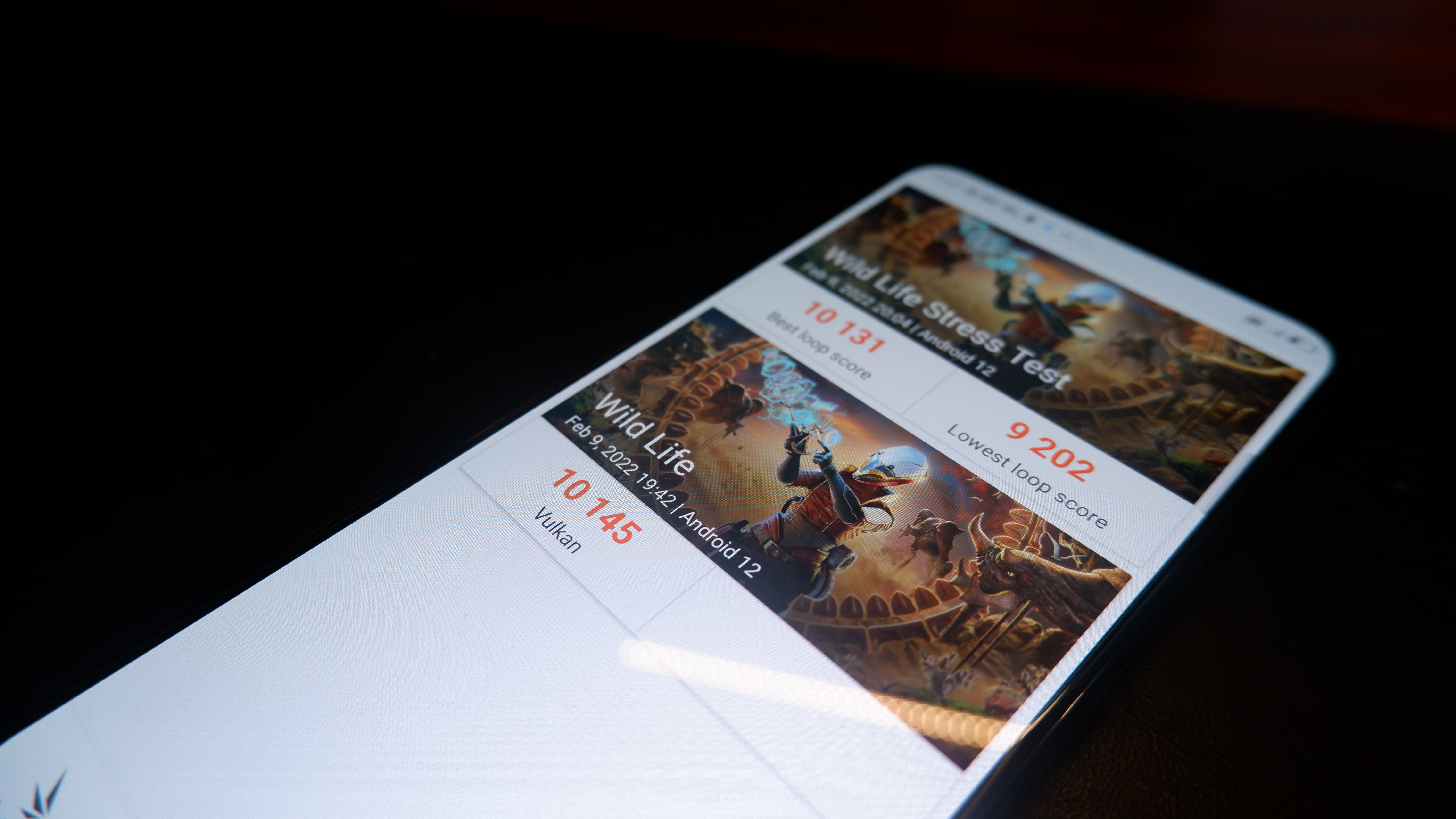
Putting numbers to this, the RedMagic 7 Pro hit a Geekbench 5 multi-core score of 3,852. That’s a minor jump over the 6S Pro (3,685) and the Asus ROG Phone 5 (3,672), which is to be expected as we hit the upper limits of this 4nm process.
But where things take a massive step is in the graphics. On the Wild Life Unlimited benchmark, the 7 hit an insane Vulkan score of 10,244 with an average framerate of 60.7 fps. Compare this to the ROG Phone 5 (5,636 and 33.8 fps with X-mode turned on) and the 6S Pro (5,881 and 35.2 fps) and you can clearly see just how big of a difference this new chipset makes.
And not only does it absolutely annihilate these two, it does so on a regular basis. I ran the same 3D Mark benchmark under stress test conditions for 20 minutes straight. Although the temperature did rise to those high levels that make the aluminum frame hard to touch, the framerate never dipped below 60 fps and the average Vulkan score was just under 10,000.
Simply put, if you need peak gaming performance without breaking the bank on a $1,000-plus phone, this is for you.
RedMagic 7: Battery Life & Charging
Turning our attention to the battery, this is the only category where I was surprised to see a downgrade of sorts, from the 5,050mAh air-cooled battery with 66W fast charging support, to a 4,500mAh dual cell with 65W fast charging.
On the charging side, the difference is unnoticeable, as I still juiced this up from 0% to full in 45 minutes. But once you start to put these through average daily use and, most importantly, play some power-intensive games, you’ll notice the differences.
For example, the 6S Pro got me to the end of a day of average use (hours of podcast listening, regular email checks, opening Twitter too many times and plenty of YouTube during my lunch) with around 35% of life. For the RedMagic 7, I was edging on 15%.
Meanwhile, playing Call of Duty: Mobile with Ultra settings and the 165Hz display switched on drained the battery in just under two hours on the 6S Pro, but was closer to 90 minutes on the RedMagic 7. Balance the power draw, reduce the refresh rate and tweak the in-game settings and you can get that a little closer to three hours, but this is still less than you’d get from the previous model for sure.
RedMagic 7: Cameras
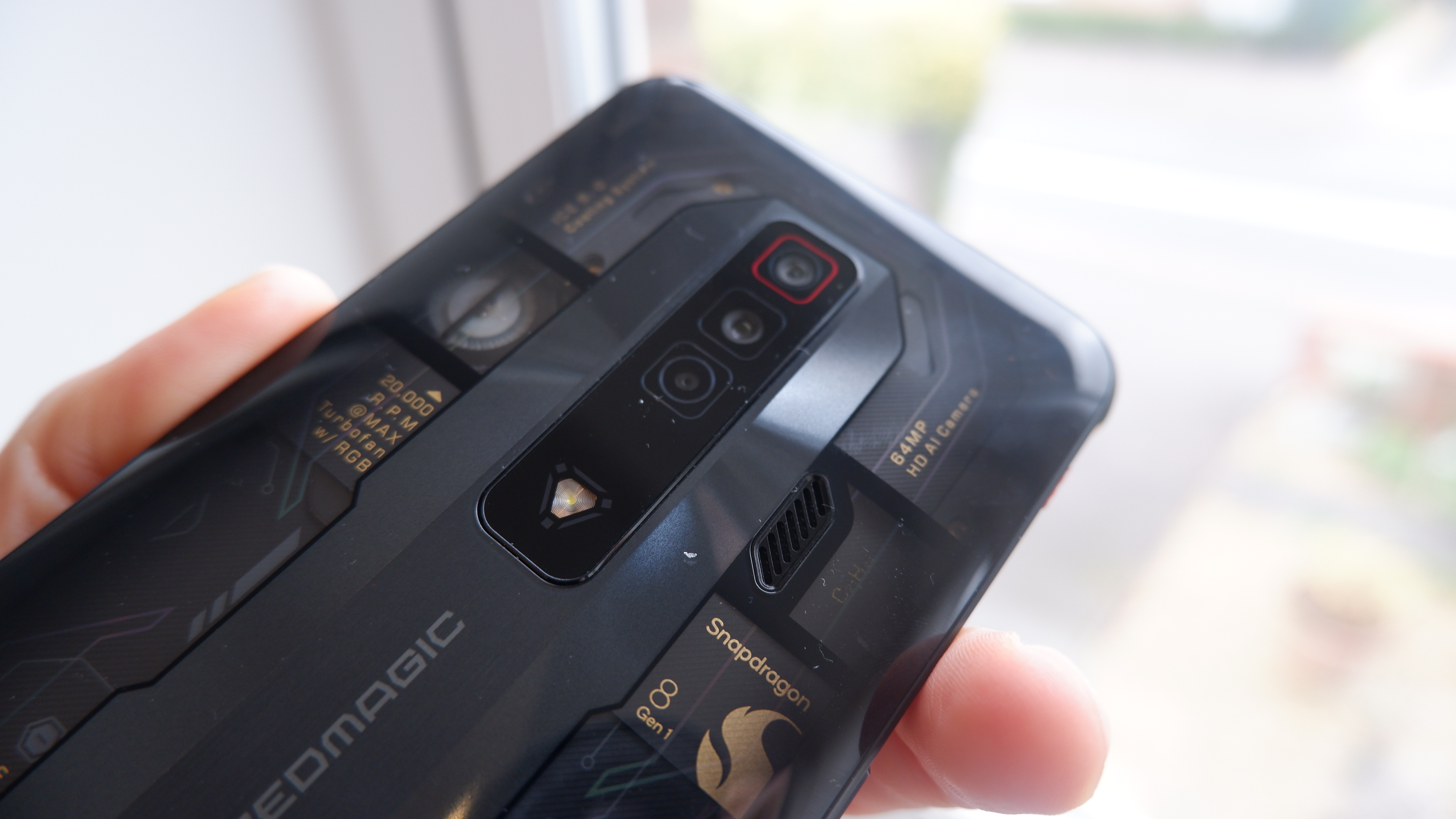
In its focus on gaming, RedMagic tends to not really care about the cameras. This trend continues in the RedMagic 7, as the shooters have no real updates over last year’s 6S Pro. It’s all about big numbers that don’t really translate to anything good.
Pictures taken on the 64MP main camera with its f/1.8 aperture are average — details are crisp, but colors are oversaturated and any slight reduction in light creates a lot of noise. The 8MP, 120-degree ultra-wide lens with an f/2.2 aperture produces spongey results that have poor detail and are noisy around the edges.
And finally, the 2MP macro lens with f/2.4 is much like other macro phone shooters in that the results are pretty ugly.
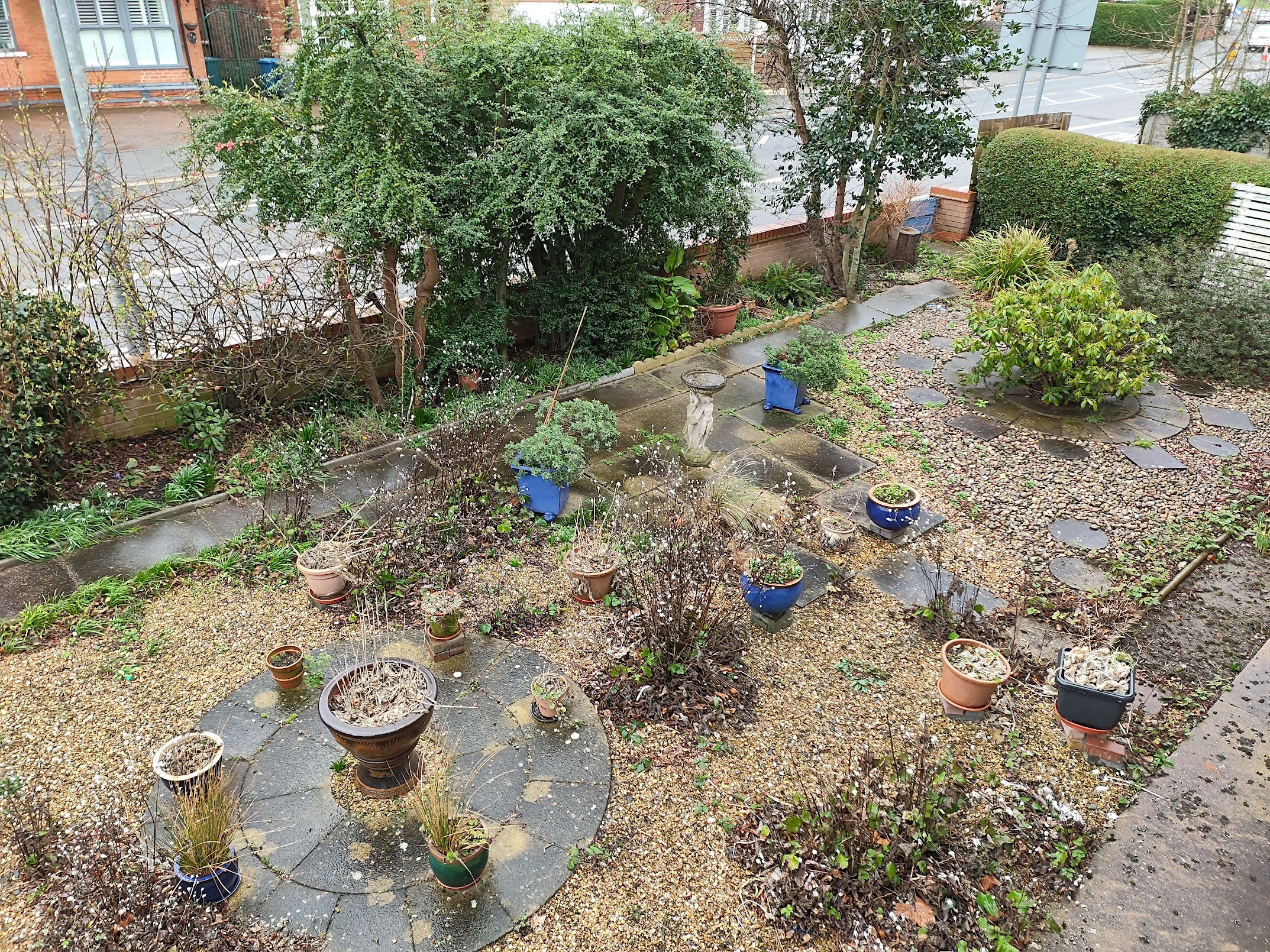


It’s a similar situation with video with the ability to shoot up to 8K at 30 fps, but the footage it captures is rather drab and lifeless with a slow auto-focus and software processing giving it a slightly blurred artificial feel to clips.
For gamers, the 8MP selfie snapper can be used for picture-in-picture streaming and it does produce a detailed picture with balanced color and contrast (provided you keep beauty mode turned off).
With a new year, I would have loved to see at least some upgrades in this category, but alas, there isn’t. Also, this is the last time that I will not factor Android OEMs having photo watermarks on by default in the review score. You’ve been warned, RedMagic, Realme, Redmi, etc.

RedMagic 7: RedMagic OS 5
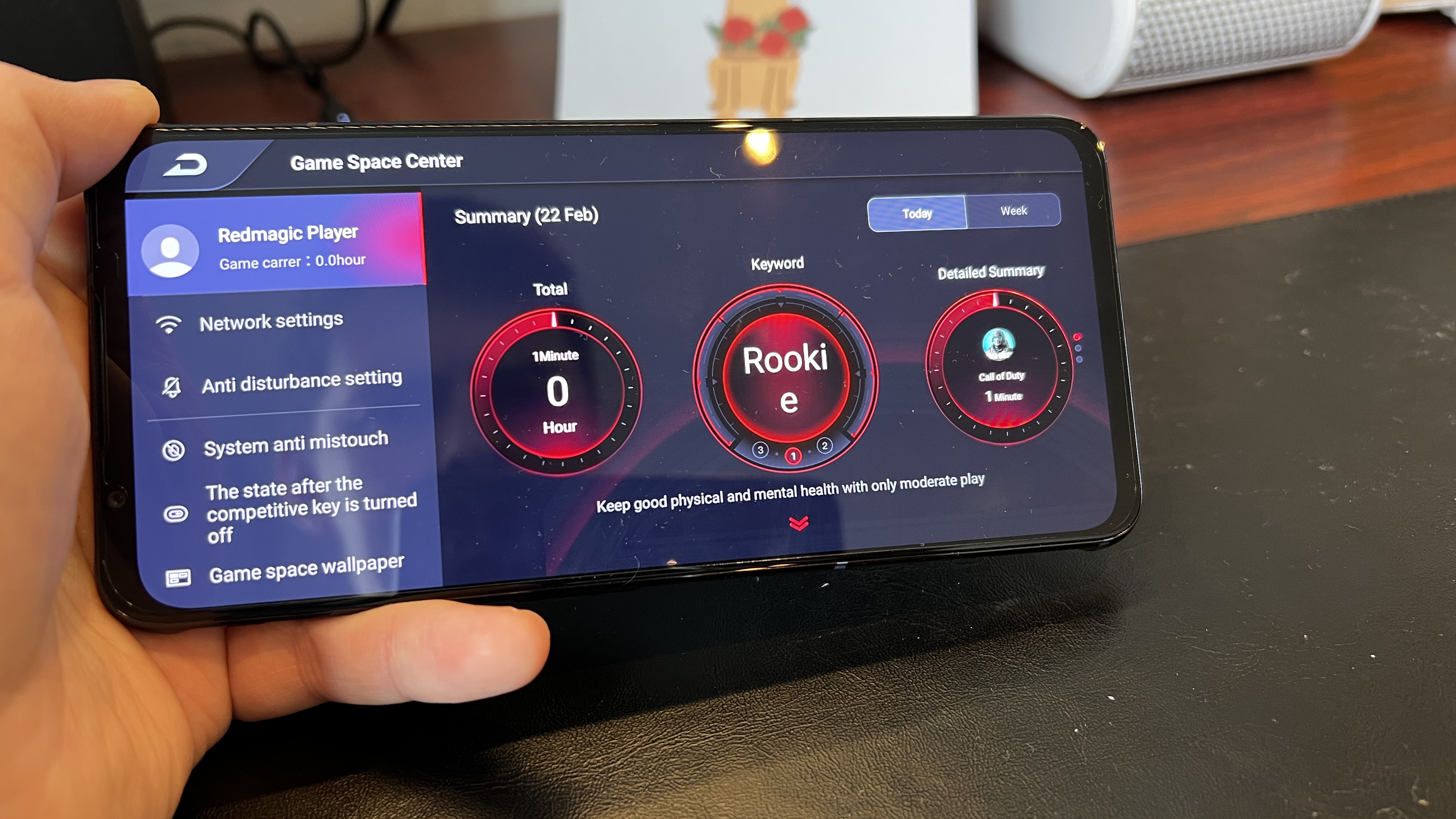
The RedMagic OS 5 skin over Android 12 does answer one of my main quarrels with it, in the form of giving you some more simplistic, phone-like UI skins.
No longer do I need to have a scantily-clad anime character wallpaper and navigate menus stuffed full of faux metal. Now, there are some gorgeous live wallpapers and the changes made to app icons and widgets makes the whole user experience less cringeworthy.
But let’s talk about the gaming features, which are easily accessible via the red switch on the left edge and transports you to a horizontal interface that transforms the RedMagic 7 into the gaming device you want.
Plus, you’ve got all the handy features needed for gamers: picture-in-picture screen recording, the ability to minimize game windows while using other apps via an overlay tray, quick access to tweak hardware settings and override the settings screens of games themselves.
All of this comes in a stable, secure build of Android 12 (for now). The problem here is that RedMagic is very vague on security and full version updates, and in my experience of using the RedMagic 6S Pro in the past and even the RedMagic 6R, updates have been very few and far in between.
Bottom line

Once again, RedMagic has made an unapologetic gaming phone that knocks it out the park with breakneck speeds, a gorgeous screen, powerful audio, responsive touch controls and a slick gamer-focussed UI.
But the same problems persist that would make me hesitant to recommend this to a wider audience of smartphone users: that gamer-fuelled hardware design, the underwhelming camera and the lack of any sort of water or dust resistance. Not only that, but with a smaller battery, you are struggling towards the end of the day.
For mobile gamers looking for top-of-the-range specs no matter what, this is the one to get. If you want an all-round good smartphone, look elsewhere.

Jason brought a decade of tech and gaming journalism experience to his role as a writer at Laptop Mag, and he is now the Managing Editor of Computing at Tom's Guide. He takes a particular interest in writing articles and creating videos about laptops, headphones and games. He has previously written for Kotaku, Stuff and BBC Science Focus. In his spare time, you'll find Jason looking for good dogs to pet or thinking about eating pizza if he isn't already.
